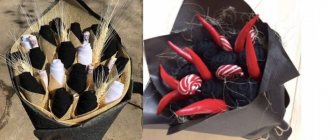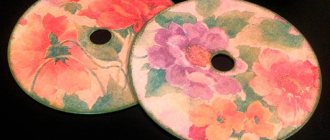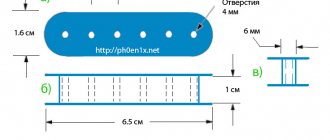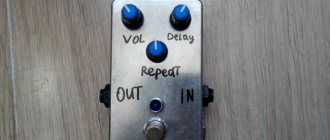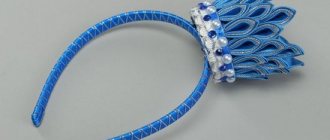| How can I replace a guitar pick? | Description |
| Old SIM card | The principle of using these analogues is the same. It is necessary to cut out the mediator from them. If you wish, you can download a template on the Internet and make a “mediator” from any material. In some cases, playing the guitar with your fingernails is acceptable. It is not recommended to choose a coin; it can break strings that are too thin. |
| Credit card | |
| Blister for tablets | |
| CD disk | |
| Plastic bottle | |
| Nylon cover | |
| Old comb without teeth | |
| Plastic ruler | |
| Plastic oil jar |
All characteristics of the pick, such as its thickness, material and shape, directly affect the sound of the guitar. The mediator quite often gets lost or erased, so the question of what can replace a guitar mediator is very relevant.
This tool can be made independently from available materials, the main thing is that the material is flexible and durable.
How to replace a mediator
| How can I replace a guitar pick? | Description |
| Old SIM card | The principle of using these analogues is the same. It is necessary to cut out the mediator from them. |
If you wish, you can download a template on the Internet and make a “mediator” from any material.
In some cases, playing the guitar with your fingernails is acceptable. It is not recommended to choose a coin; it can break strings that are too thin.
All characteristics of the pick, such as its thickness, material and shape, directly affect the sound of the guitar. The mediator quite often gets lost or erased, so the question of what can replace a guitar mediator is very relevant.
This tool can be made independently from available materials, the main thing is that the material is flexible and durable.
How to choose a guitar pick. Introductory information
One of the main tools for producing sound is a mediator.
This is a thin plate made of natural or synthetic material, which is struck on the strings, thus producing sound. At the same time, it comes out much sharper and harder than when playing with fingers, due to a stronger attack - and that is why at the moment the plectrum is used even when playing complex picking - although in this case it is put on the fingers, as when playing a banjo. In this article we will tell you which mediator to choose, give a brief description of almost all of their types, and also summarize everything that has been said and prepare tips on which plectrum is best to buy.
Which material to choose
Each material has its own characteristics that will affect the sound.
- Metal – this type of pick provides a sharp and bright sound, but it will not be the best solution for an acoustic guitar.
- Leather – Cut a pick from a leather belt. It will help you get high-quality bass sound. The leather makes the guitar sound muffled and thick.
- Plastic – any plastic product is suitable for such a mediator. You just need to experiment with thickness and shape, choosing the most successful option for yourself.
- A plastic card will be the most successful solution for making a mediator, since it will fully correspond to the parameters of the original.
What to choose?
Finding exactly “your” mediator is not an easy task. Each guitarist has his own requirements for the mediator, its shape and size, thickness and material. Often guitarists use different picks when playing different guitars. So the guitarist will be able to consciously make a choice only after playing with a large number of a wide variety of mediators.
Fortunately for us, guitar picks are not that expensive, and even a guitarist on a tight budget can try different options. Go for it!
Some tips
To make a metal pick, it is better to use metal scissors; it will not be possible to cut it with ordinary ones.
Use a special cutter to trim leather. To make the pick easier and more comfortable to hold in your fingers, attach several staples to it using a stapler or wrap it with electrical tape.
Mediator from a tablet folder
The most ideal material for a homemade mediator would be polyvinyl chloride, from which tablet folders are made. To make a pick, follow these simple instructions.
- Cut one corner of the folder using regular scissors.
- The result will be a triangle with too sharp corners.
- Using the same scissors, cut off the corner from the pick.
- The mediator is ready.
The main drawback is that they are not very comfortable to play with. However, you can constantly cut a new tool while achieving maximum comfort.
Finding a replacement pick is quite easy. Anything that can be held with two fingers is suitable for this purpose. It can be cut from a plastic card, a ruler, or even a nylon cap. You just need to use your imagination and experiment with each option.
Source
Tips and tricks
To make the perfect pick, you should pay attention to certain points:
- to make a device from metal, it is better to use metal scissors;
- leather plectrums are cut using chisels;
- when making an accessory, use a holder - a vice, pliers;
- You shouldn’t make the plectrum too big, because it will catch the strings too much and will quickly break;
- to sand the edges, you can use thick fabric, such as jeans, zero-grade sandpaper or a fine nail file;
- It is better to make the surface of the accessory a little rough. This reduces the risk of the device slipping out of your fingers at the most inopportune moment.
In order not to lose a self-made plectrum, it is worth considering where to store it. In musical instrument stores you can find a special holder for picks. There are these types of holders:
- deck holder;
- string holder;
- table holder;
- holder attached to the microphone stand;
- wristband;
- special case.
It is important to remember that the selection of a mediator is purely individual. Not a single piece of advice from friends or specialists will help in this delicate matter. Each musician has his own plectrum.
DIY epoxy resin pick
So let's get started. We take a die from the black Hornbeam and draw out this piece.
And after that we take and cut the piece into two parts. Then we glue a piece of black Hornbeam to a small plexiglass.
Next, we make a small bath and put a piece of Hornbeam in the resin water.
Add a solvent and make the background red, mix orange, pink and white colors separately to get a beautiful shade.
After two days, the results are obvious.
We use coarse sandpaper to smooth both sides.
Then we glue a pattern that looks like a mediator.
We cut out a rough blank from the material.
We sharpen the product using a file.
And then we give the finished look with fine sandpaper and oil. We wet the sides of the mediator in oil, and then rub them with sandpaper.
The result is obvious.
Tips for choosing the perfect pick
What to avoid
You should avoid mediators that are uncomfortable for you, as well as advice from other friends. Choose for yourself - because what some people use may not suit you. If they are trying to convince you that some kind of mediator is good, but you feel that you simply do not like its sound and the way it lies in your hand, it is best to refuse it.
Options for Beginners
The best option for a beginner is standard-shaped picks made from Tortex or Ultem. Chances are, one of these will definitely suit you. Models made from natural materials are more exotic, and you will have to work with them, whereas the above plectrums never fail.
Options for advanced guitarists
If you want to try something new, then the best way to do this is to simply buy a lot of unusual and unfamiliar picks. Listen to them, play a few rehearsals, and only after that make a choice.
DIY disc mediator
A problem that often plagues guitarists is the constant loss of picks.
No matter how hard we try to preserve the mediator by placing it in a prominent place, sooner or later it disappears. I’m usually too lazy to go shopping for a new one, and the nearest store is a bit far away.
To make a mediator, we will need an unnecessary plastic card or a used CD.
We apply an old pick or copy it from the Internet, and then cut out a pattern from paper and outline the outline.
If a CD is used as the material, outline the outline with a sharp object. For the card, you can get by with a pencil. We cut, but not along the contour, but around it.
Then we level it, we do this work with a file, but you can also use a nail file to process your nails.
Pick or plectrum?
Every guitarist knows that a guitar pick is a thin, pointed plate that is used to strike the strings when playing.
But where did this name come from? Everything is very simple. The word “mediator” comes from the Latin word mediator, which means “intermediary.” After all, this really is an intermediary - between your fingers and the strings of the guitar.
But sometimes a guitar pick is called a strange word “plectrum”. In fact, there is nothing strange here: this word comes from the ancient Greek plectron - from plesso, “to strike” (including the strings).
In our country, the word “mediator” has taken root, but in English a mediator is always called a plectrum. In colloquial English, plectrums are called even more simply - picks.
DIY mediator photo:
How to make a pick with your own hands
Today every third teenager has a guitar, and adults are not averse to remembering their youth and singing songs with a guitar, especially if they are in the mood for it. In addition to the guitar and the ability to use it, in most cases a mediator is needed. We will tell you how to make a mediator or blector from scrap materials in this article.
Please watch the video and you will understand how quickly and easily you can make a pick with your own hands from available materials.
We will need:
- a pointed metal stick or pin; - old plastic card; - an old pick or shape that will need to be traced; - felt-tip pen; - scissors.
So what do we need to do.
First of all, we take a felt-tip pen and a shape and trace on an old plastic card the shape of the pick that we will need to cut out. If you have some interesting cards, you can easily make a pick with a pattern.
The next step is to carefully cut out our future pick along the line. It is very important that the line is clear, but not very deep (this is the case if you outline the workpiece not with a felt-tip pen but with a pin or sharp stick); if the line is deep, then you will have to cut exactly along it, otherwise the edges of the mediator will be stick out a lot. But then we will still polish it and bring it into an even shape.
We should have a blank, the edges of which will need to be rubbed. Now we take paper or a rag or even a carpet and begin to rub out all the unevenness. All edges rub easily, so you need to be very careful, one wrong move and you could have a sharp corner on your lecture.
The edges of the mediator should be rubbed using arcuate movements to give it an even shape.
We ended up with slightly shaggy, but smooth edges of the workpiece.
Now we rub the surface. We place the pick horizontally and begin to rub it on the paper, this way we remove the shaggyness. The remnants of grated plastic are removed from the edges. You can also use a nail file to remove roughness.
That's it, our mediator is ready. They need to play either by fighting or pinching. You can make a large pick or a small one, and the quality of your guitar playing will not change.
Source
Homemade pick
This post will kill all the factories that produce mediators!) Because, with a minimum of tools and an hour of time, you will have a dozen or two mediators of whatever shape and caliber you want.
As you probably guessed from the photo, we will make mediators from old plastic credit (debit) cards, SIM cards of mobile operators, or other similar plastic products.
All the tools needed for this operation are shown in the photo:
Namely:
- A bag (a must-have item, because a lot of picks lying around everywhere after the manufacturing process will become a problem for you. Which can be solved by putting them directly in a bag and taking them out as needed (lost))
- Scissors. The cards are made of soft plastic that can be cut with regular nail scissors.
- File. For straightening the ends after cutting with scissors.
- Sandpaper to remove burrs.
- Pen. For marking picks on a card.
- Plastic cards.
So, you have all of the above, and you are ready to compete with the monsters of the guitar industry. We take a card and, applying the template, trace the outline with a pen. You can use a ready-made mediator as a template. As you can see from the figure, there are 6 doctors. From Sim card - 4 pcs.
Next, use scissors (it’s convenient to use rounded ones) to cut out the blanks.
Soft, thin mediators are made from old Megafon payment cards. They are good for strumming on an acoustic guitar. Bank cards and Sims make tough doctors, for playing the rhythm of parties on the electric guitar.
It will not be possible to cut evenly, so the next step is to take 4-5 picks together and file them, giving them an average, even shape.
We ensure that the entire batch has the same smooth contours.
Remove burrs from the file using medium-grit sandpaper.
That's all! We put the resulting set of mediators into a bag)
- Happy guitar playing!
- _____________
- Alexander Dolzhenkov
14.10.2010
Source: https://guitarwork.ru/other/samodelnyj-mediator/
How to make a guitar pick with your own hands?
It is much easier to go to any musical instrument store and purchase a ready-made accessory. But a true musician will not resort to a simple solution. It is important that the plectrum fits the guitarist perfectly:
- was of the correct shape;
- the coating did not irritate the fingers;
- had the required thickness;
- didn't slip in my hands.
Unenlightened people may decide that it makes no difference which record you hit the strings with. And they will be wrong. A lot depends on the plectrum.
Finger pick
Mizrab - thumb pick
Pick claw
Application
Finger picks are placed on the pads, thereby providing the very attack that is missing when playing fingerpicking. It is worth noting that before using them, it is worth mastering not only how to play with a pick, but also the placement of your fingers on the guitar. They are widely used by various fingerstyle players, and are also a necessary accessory when playing the banjo.
Necessary tools for work
To make the perfect fixture, you must have the following tools:
- The main material from which the plectrum will be made.
- Cardboard or other dense material from which a preliminary shape is cut. An old pick will also work.
- Scissors. You can also use a utility knife, but scissors are safer.
- Dark felt-tip pen or pen.
- Sandpaper.
- File.
Tools should be prepared in advance.
A few general points
Firstly, choosing the best guitar picks -
The question is purely individual. Try different models - and at some point you will definitely find the best option for yourself.
Secondly, still try to look at the rough models, since they hardly slip out of your fingers, which will greatly simplify the game process.
Thirdly, there are options that are objectively worse than others - for example, wooden picks definitely wear down and break faster than others, and playing with steel picks is unusual and more difficult.
What can a mediator be made from?
In order for the plectrum to become the main assistant in playing the guitar, you need to choose the right material from which the device will be made. What can a mediator be made from:
- leather;
- metal;
- plastic;
- plastic cards;
- coins;
- tree.
If necessary, you can use computer disks.
Leather plectrums are used to play the gusli and ukulele. Made from very dense fine-fiber leather.
On a note! When used, the accessory does not become shaggy, but grinds down with an even cut.
Thickness is approximately 3.5-4 millimeters. You can make your own leather guitar pick from an old, unnecessary belt. The sound from such an accessory will be thick and muffled.
Metal
This accessory is designed for electric guitars. With its help, a characteristic sound is squeezed out. You can make a metal pick at home from sheet metal.
Attention! Devices made from this material are not used so often, because metal strings wear out quickly, and metal is also suitable for acoustic guitars.
The metal is used to make a mizrab - a ring with a claw. The device is used for playing the tar and sitar. The ring is placed on the index finger in the nail area, and the claw itself protrudes half a centimeter to pinch the strings.
Plastic
The most common material. Liquid plastic is poured into an aluminum mold. The future mediator remains there until the plastic cools completely.
At home, you can make a pick from any plastic part. You can experiment with shape, thickness and flexibility.
Plastic cards
Plastic bank cards are a great option for a plectrum. The material bends easily without breaking and produces the “correct” sound on a bass guitar. A mediator made from a plastic card is a quick and affordable option for an important device.
Coins
Using a vice and a file, you can make a plectrum from a coin. It is important to properly process the edges and reduce the thickness of the coin, otherwise the sound will be bad. The sound principle is the same as that of metal devices.
Tree
The devices are made from hard wood. This material extends the service life of the accessory. The sound when playing with such an accessory comes out warm and soft.
Computer disks
The discs have high wear resistance. Therefore, a disc mediator will serve faithfully for a long time. When making a plectrum from a disc, it is important to carefully cut out the shape to avoid cracks and carefully prepare the work area.
In addition to plectrums, from the above materials you can find more exclusive devices made from tortoiseshell, epoxy resin, glass, stone, ceramics, coconut, ivory and carbon.
Mediators made from natural materials:
Tortoiseshell Picks – Tortoise Shell Pick
These are the hardest picks, which even with a small thickness are quite hard. Plus they give a nice, clear tone. The main disadvantage is the impossibility of getting them anywhere except in online stores, and it is also worth mentioning their high cost.
Turtle Substitute - Turtle shell substitute
A great option for those who want to get the tone of a tortoise pick, but are not in the mood to buy such things online. Plectrums made from shell substitute give that very characteristic tone. However, they are quite difficult to obtain, and they are all very thick.
Sound example:
Farmed Turtle Shell
These are just really bad plectrums. The fact is that initially the goal was quite good - to create high-quality acoustic guitar picks that would give that same “Turtle” tone, without the need to raise and kill turtles. However, the main problem is that picks are made from sea turtle shells, whose plates have been strengthened by being in water. This has nothing to do with land turtles.
Tagua (Corozo) Picks – Vegetable Ivory
This is a pretty good option for any guitarist. They have a bright and warm tone, and are also quite tough and durable. The main disadvantage is that they do not bend, and are also quite thick themselves. However, this is a great choice for a bass guitar pick.
Sound example:
Coconut Shell Guitar Picks
Another great option for a mediator made from natural material. It has a decent tone and attack, but it is also very thick and almost does not bend.
Sound example:
Sheesham Wood Picks – Wooden pick
Ambiguous option. On the one hand, wooden picks have an extremely unique but interesting sound, as well as a texture that is pleasant to the touch. On the other hand, they wear out very quickly, which is why you constantly have to buy new options.
Sound example:
Surfpick (Lignum Vitae Wood)
The same thing as with ordinary wooden picks - an interesting tone, but they quickly become unusable.
Sound example:
Buffalo Horn Picks – Natural Buffalo Horn
One of the types of picks that can give that “turtle” tone that a lot of guitarists like. However, buffalo horn picks wear down quickly and are very brittle.
Sound example:
Bone (and Ivory) Picks
Quite a specific mediator. It is very hard, which some guitarists like, so it is strong and durable. However, because of this, extra noise will be generated when playing, and the attack itself with this plectrum is far from perfect. In addition, it does not bend.
Sound example:
Stone Guitar Picks – Stone
An extremely specific option that is best suited for solo guitarists. It gives an extremely specific tone color that is difficult to confuse with something else. However, this material is not very suitable for playing chords - but shows itself well in solo parts.
Sound example:
l Picks – Metal
Metal picks produce an extremely warm and gentle tone, but at the same time they feel rigid on the strings and do not bend at all.
Sound example:
Abalone Picks
A good option for mediators that give a gentle and soft tone. They are quite stiff, which may not be to the liking of some guitarists.
Determination of shape, thickness and size
The following types of devices are distinguished by form:
- standard;
- jazz;
- enlarged (triangle);
- "shark tooth";
- "claw";
- a drop.
Based on thickness, plectrums are conventionally divided into three types:
- thin - from 0.38 mm to 0.65 mm;
- average - from 0.65 mm to 0.88 mm;
- thick - from 0.88 mm to 3 mm.
The size of picks varies from 25 millimeters to 39 millimeters. It all depends on the individual characteristics and preferences of the guitarist. The main thing is that the device does not slip out of your hand.
Choosing a shape and style
Below are pictures of picks of various shapes. Choose what you like best - it’s best to try everything and decide what is most convenient.
- Standard Shape
- Standard Shape, Sharp Tip
- Jazz III, aka Little Jazzer - Jazz III, also known as Little Jazzer
- Pointy Pick
- Shark Fin Pick
- Teardrop (wide)
- Teardrop (narrow) - Drop (narrow)
- Triangular Pick
Algorithm for creating a mediator
After choosing the material, shape, thickness and size of the plectrum, the stage of creating the ideal assistant for playing the guitar begins. The manufacturing process of the device step by step:
- Let's create a template. To do this you will need cardboard or any other dense material. Let's draw the shape. Cut out the mediator template. To simplify the process, you can take an old accessory or print a ready-made form.
- We attach the template to the material from which the accessory will be created. Trace, cut out.
- File the sharp edges. You can round the edges during the grinding process or leave them sharper.
The most important stage is bringing it to perfection. Using medium-grain sandpaper, remove burrs and irregularities. Can be treated with thick fabric, such as jeans.
Material selection
The first thing you should pay attention to is, of course, the material from which the plectrum is made.
Density and flexibility
The stiffness of the pick is one of the most important things to look at. For example, many guitarists who are used to playing guitar texture on an acoustic instrument prefer picks that bend almost like paper. Those who play solo parts love hard records because they give excellent attack.
Resistance to destruction
Nobody wants their new pick to wear off after the first song they play. That is why it is worth paying attention to how quickly the mediator breaks. Of course, this cannot be done in any other way except through experience - so the first piece of advice for any guitarist is to buy different picks, just to understand what is comfortable for you to play personally.
Hardness
This is a more relative thing that is convenient for everyone in their own way. Some people really like soft picks, simply because they are easier to play with, while others like hard ones because of their attack. In this regard, rely on your feelings.
Plastic
Another question about convenience. In this regard, also simply rely on your feelings and sensations - some people like more plastic ones, others less. However, keep in mind that if you want to play chords on the guitar, then for a better guitar sound, more flexible options are still recommended, as opposed to soloing.
Tactile feel and comfort
Again, in this regard, do not rely on advice on the Internet, but on your own feelings. The most important thing is that the pick fits well in your hand, does not slip out of it, and does not get knocked out during playing.



